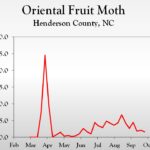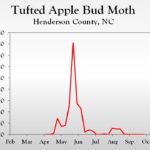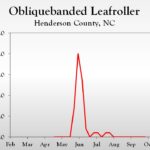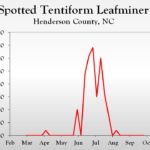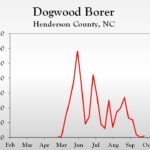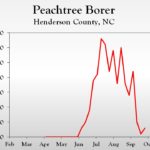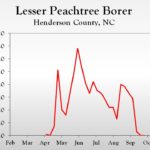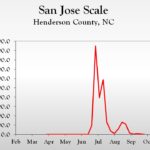WNC Orchard Insect Pest Populations – October 6, 2020
go.ncsu.edu/readext?740233
en Español / em Português
El inglés es el idioma de control de esta página. En la medida en que haya algún conflicto entre la traducción al inglés y la traducción, el inglés prevalece.
Al hacer clic en el enlace de traducción se activa un servicio de traducción gratuito para convertir la página al español. Al igual que con cualquier traducción por Internet, la conversión no es sensible al contexto y puede que no traduzca el texto en su significado original. NC State Extension no garantiza la exactitud del texto traducido. Por favor, tenga en cuenta que algunas aplicaciones y/o servicios pueden no funcionar como se espera cuando se traducen.
Português
Inglês é o idioma de controle desta página. Na medida que haja algum conflito entre o texto original em Inglês e a tradução, o Inglês prevalece.
Ao clicar no link de tradução, um serviço gratuito de tradução será ativado para converter a página para o Português. Como em qualquer tradução pela internet, a conversão não é sensivel ao contexto e pode não ocorrer a tradução para o significado orginal. O serviço de Extensão da Carolina do Norte (NC State Extension) não garante a exatidão do texto traduzido. Por favor, observe que algumas funções ou serviços podem não funcionar como esperado após a tradução.
English
English is the controlling language of this page. To the extent there is any conflict between the English text and the translation, English controls.
Clicking on the translation link activates a free translation service to convert the page to Spanish. As with any Internet translation, the conversion is not context-sensitive and may not translate the text to its original meaning. NC State Extension does not guarantee the accuracy of the translated text. Please note that some applications and/or services may not function as expected when translated.
Collapse ▲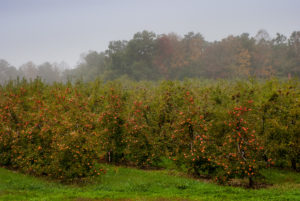 October 6, 2020
October 6, 2020
The last full pest report was September 8, but traps will continue to be checked and the numbers updated until insect populations approach zero. Most pests are continuing to decline in number.
The full September 8 pest report can be seen on our website. All previous 2020 pest reports can be found by scrolling down this page.
Learn more about southeastern apple insect pests at the Apple Insect Management page.
2020 Average Weekly Trap Captures
| HENDERSON COUNTY | |||
| Insects per trap | |||
| Sep 21 | Sep 28 | Oct 5 | |
| Codling moth | 0.0 | 0.0 | 0.2 |
| Oriental fruit moth | 1.8 | 2.1 | 1.6 |
| Tufted apple bud moth | 0.0 | 0.0 | 0.0 |
| Redbanded leafroller | 0.0 | 0.0 | 0.0 |
| Obliquebanded leafroller | 0.0 | 0.0 | 0.0 |
| Lesser appleworm | 0.0 | 0.0 | 0.0 |
| Apple maggot (abandoned and research orchards) | 0.3 | 0.0 | 0.0 |
| Brown marmorated stink bug (commercial) | 1.7 | 3.5 | 3.8 |
| Brown marmorated stink bug (unsprayed) | 12.0 | 6.5 | 5.8 |
| Spotted tentiform leafminer | 0.0 | 0.0 | 0.0 |
| Dogwood borer | 2.0 | 0.0 | 1.0 |
| Peachtree borer | 5.0 | 1.0 | 3.0 |
| Lesser peachtree borer | 3.0 | 0.0 | 0.0 |
| San Jose scale | 20.0 | 10.0 | 0.0 |
*Note that these averages illustrate only the timing of insect emergence and fluctuations in populations, and are not representative of population levels in any given orchard. The only way to have an accurate assessment of an individual orchard’s populations is to set up traps in that orchard.
2020 Accumulated Degree Days
| HENDERSON COUNTY | ||||
| Sep 21 | Sep 28 | Oct 5 | ||
| Codling moth (Biofix 4/20) | 2806 DD | 2880 DD | 2940 DD | |
| Oriental fruit moth (Biofix 3/30) | 3725 DD | 3831 DD | 3917 DD | |
| Tufted apple bud moth (Biofix 4/27) | 3467 DD | 3573 DD | 3659 DD | |
2020 Pest Trends (click to enlarge)
Visit WNC Orchard Insect Populations for archived posts.
Additional Resources
- Apple Insect Management Overview
- How to Monitor Apple Insect Pests (IPM)
- Brown Marmorated Stink Bug in North Carolina
- Integrated Orchard Management Guide for Commercial Apples in the Southeast
- Walgenbach Entomology Lab




